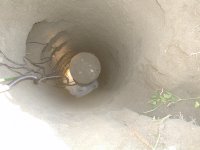Agrichar trials in NSW
 News and commentary on agrichar is flowing steadily this spring, first with the reporting on the 1st annual Agrichar Conference, and now with the reporting on initial agrichar trials by the New South Wales Department of Primary Industries (NSW DPI). Particularly encouraging is that the sophistication of the comments continues on the increase.
News and commentary on agrichar is flowing steadily this spring, first with the reporting on the 1st annual Agrichar Conference, and now with the reporting on initial agrichar trials by the New South Wales Department of Primary Industries (NSW DPI). Particularly encouraging is that the sophistication of the comments continues on the increase.
Snippets from ABC' Discovery channel ...
Recent greenhouse trials found soils mixed with the charred waste, called agrichar or biochar, were more attractive to worms and helpful microbes.
Agrichars trialled by NSW DPI include those from poultry litter, cattle feedlot waste as well as municipal green waste and paper mill sludge. Each agrichar has its own characteristics and interacts differently with different soil types.
Some agrichars raise soil pH at about one-third the rate of lime, raise calcium and reduce aluminium toxicity.
Kimber said more research needs to be done on working out which agrichars are best for which soils and on the impact of any contamination in biomass.
... reinforce the need for local pyrolysis pilot projects. The pyrolysis pilot hurdle is necessary where widespread agrichar use is the goal. Clean air concerns combines with the limited supply of local expertise and experience needed to achieve the low-temperature pyrolysis ideal for producing agrichar.
I have submitted comments emphasizing the need for pilot agrichar projects to our State's climate change folks.
(AP image source)








